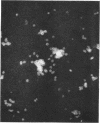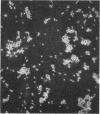Abstract
Natural and immune human antibodies reactive with heat-labile and heat-stable antigens of virulent Neisseria gonorrhoeae were studied by use of an indirect fluorescent-antibody (IFA) procedure. The immunoglobulin class of the reactive antibodies was identified by using fluorescein-conjugated antisera specific for human IgG, IgA, or IgM in the IFA procedure. The effects of heat and mercaptoethanol on IFA reactivities were also studied. It appeared that antibodies of the IgG, IgM, and IgA classes present in the sera of both infected persons (immune antibodies) and normal persons with no history of gonococcal infection (natural antibodies) react with heat-stable somatic antigens. Immune IgG antibodies, however, were distinguishable from natural IgG antibodies by their ability to recognize heat-labile surface antigens. The distinction between natural and immune IgM antibodies was less obvious. IgM antibodies from both infected and normal persons appeared to react with heat-labile antigens. Some, but not all, infected persons had immune IgA antibodies to heat-labile as well as to heat-stable antigens. Treatment of sera with mercaptoethanol had no effect on IgG antibodies. The IFA activity of IgM antibodies was decreased, but not abolished. The effects of mercaptoethanol on IgA antibodies were variable. Some sera showed a decrease in IgA titer, and others showed an increase in IgA activity to certain antigens. Immune IgG antibodies were more resistant to heating than were natural IgG antibodies. Natural and immune IgM antibodies appeared equally sensitive to heating. IgA activity, on the other hand, was increased by heating sera at 60 C, but was decreased at higher temperatures. Thus, it appears that natural and immune human IgG antibodies to N. gonorrhoeae may be distinguished by their interactions with heat-labile antigens and by their resistance to heating.
Full text
PDF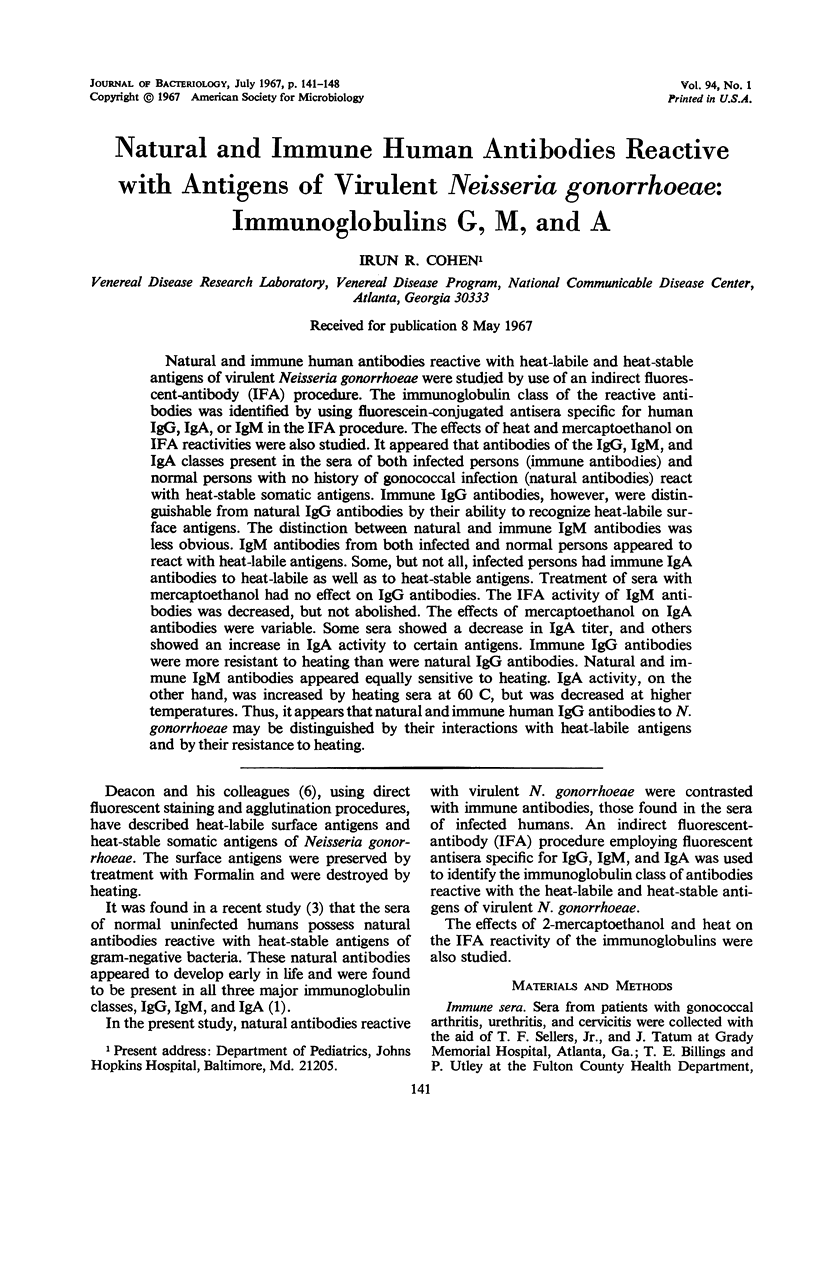
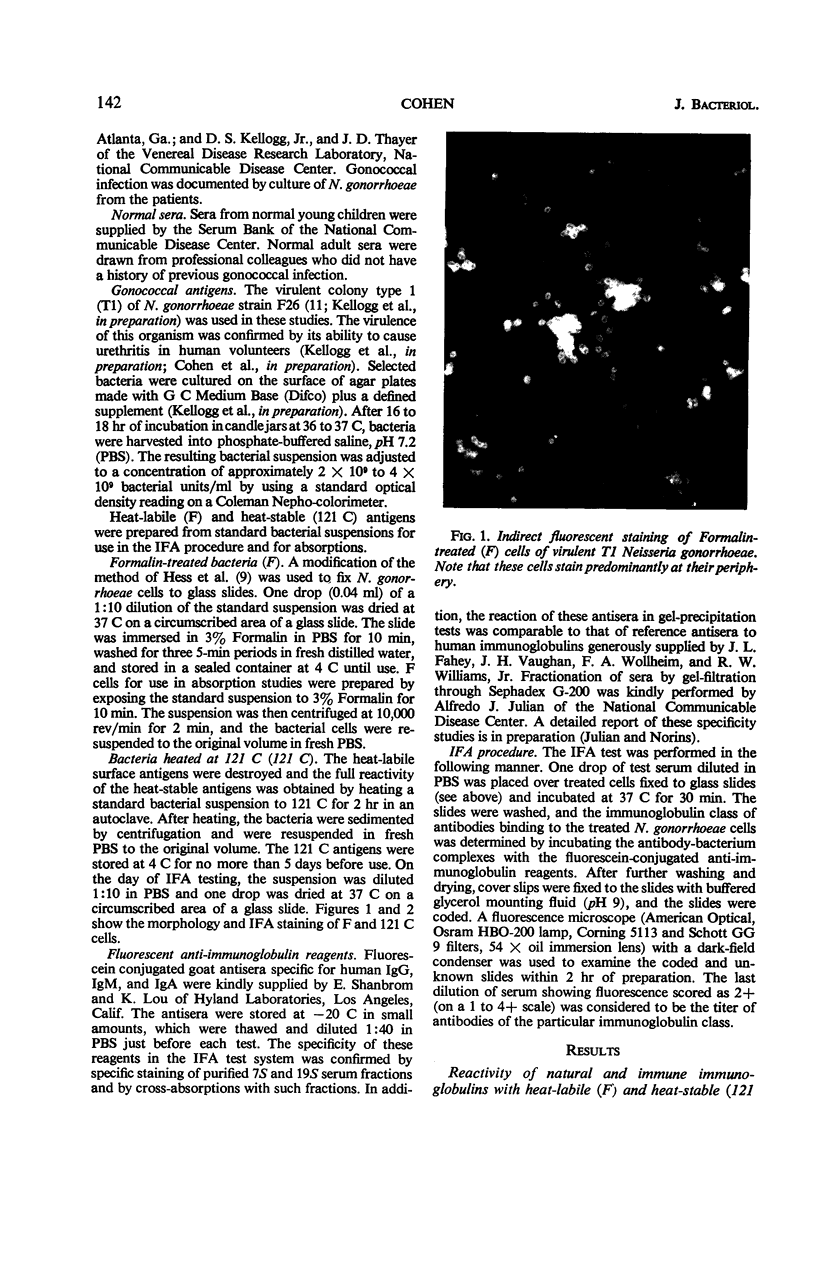
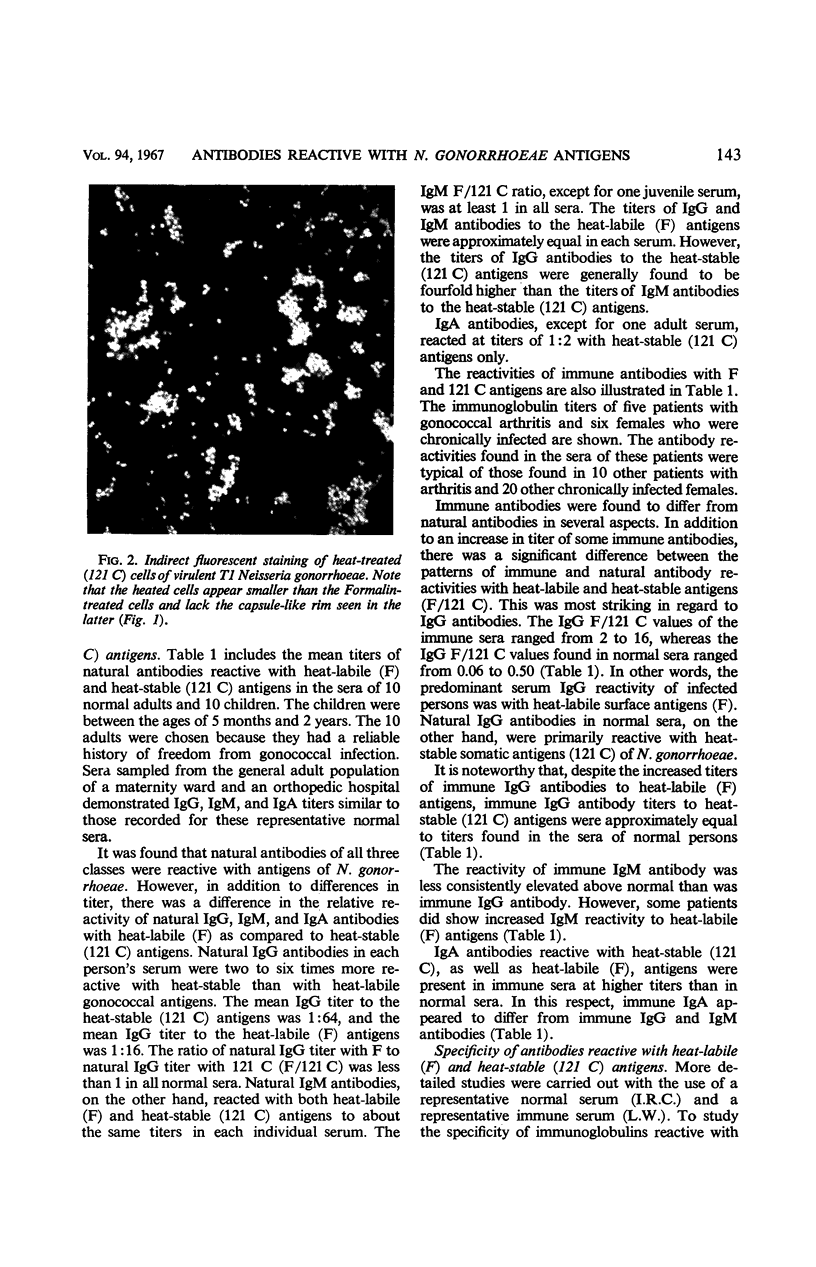
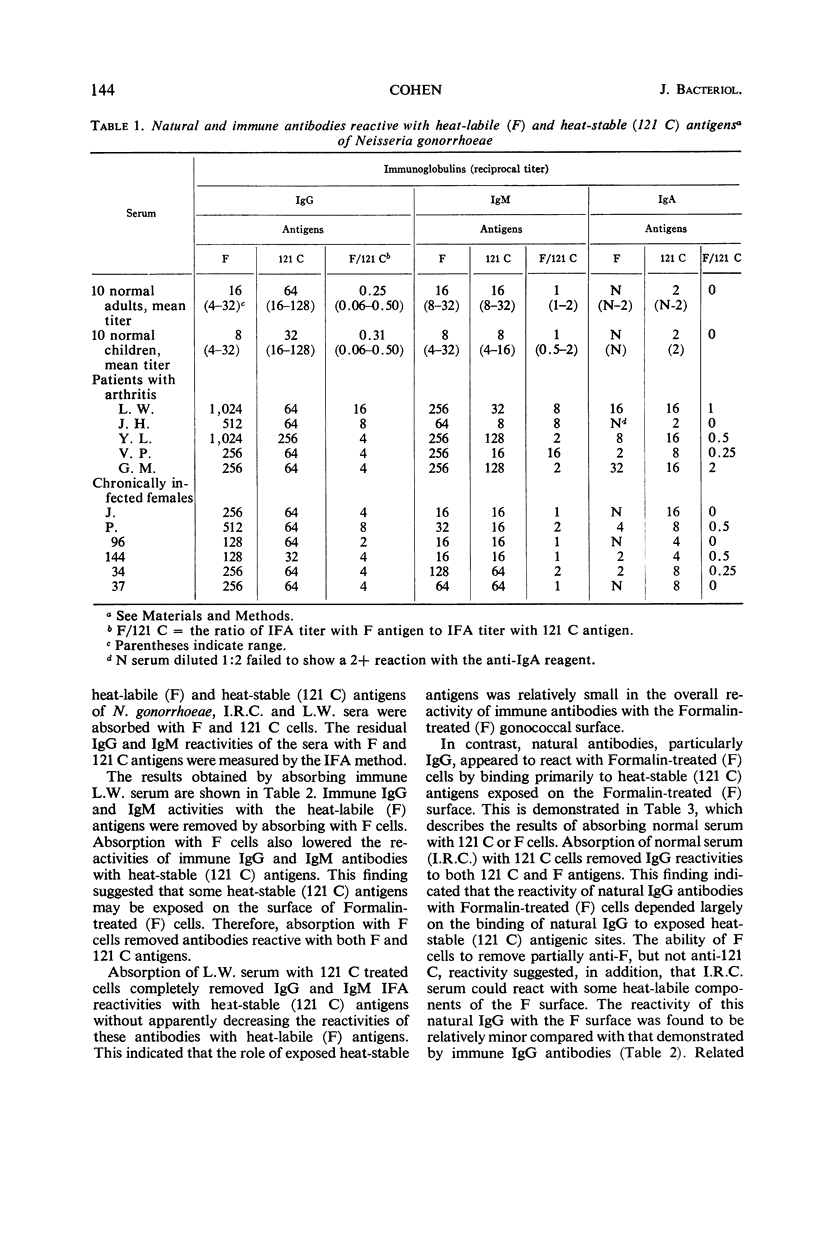
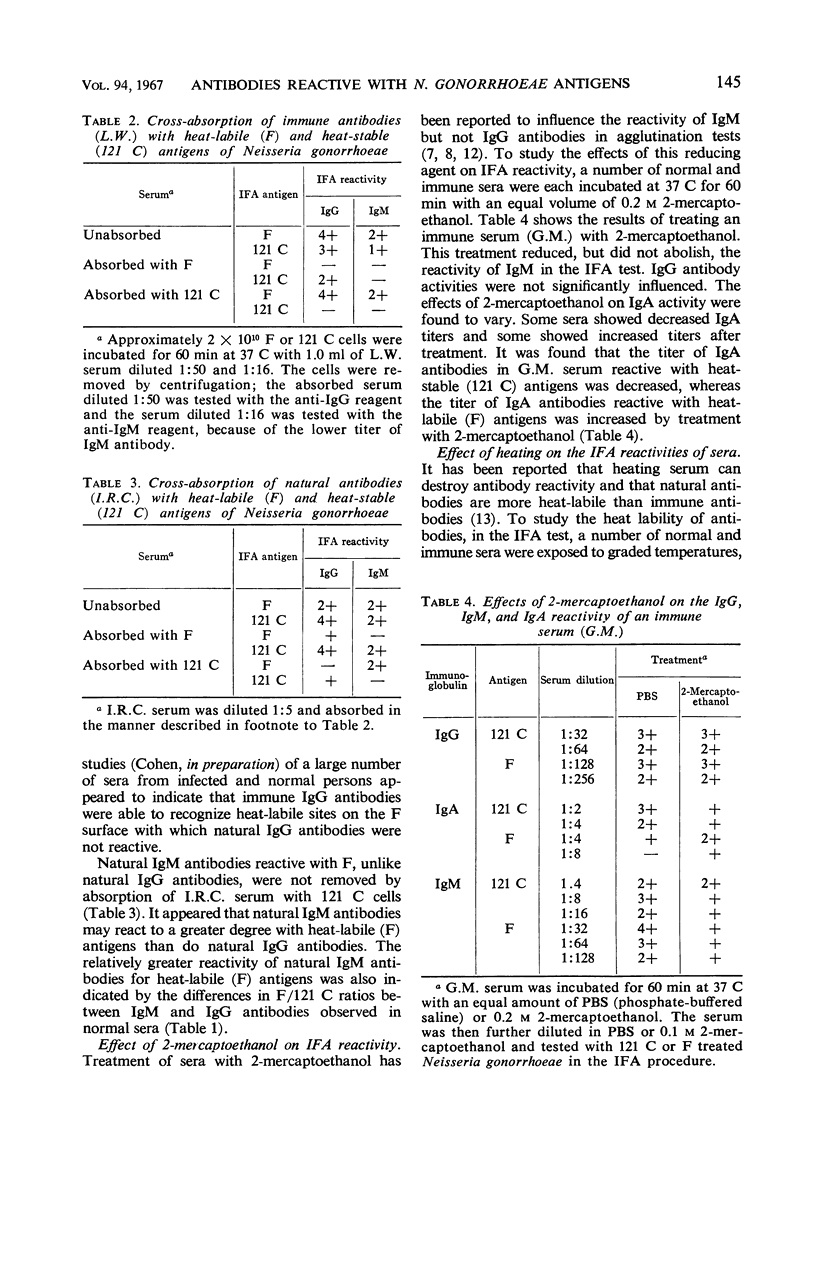
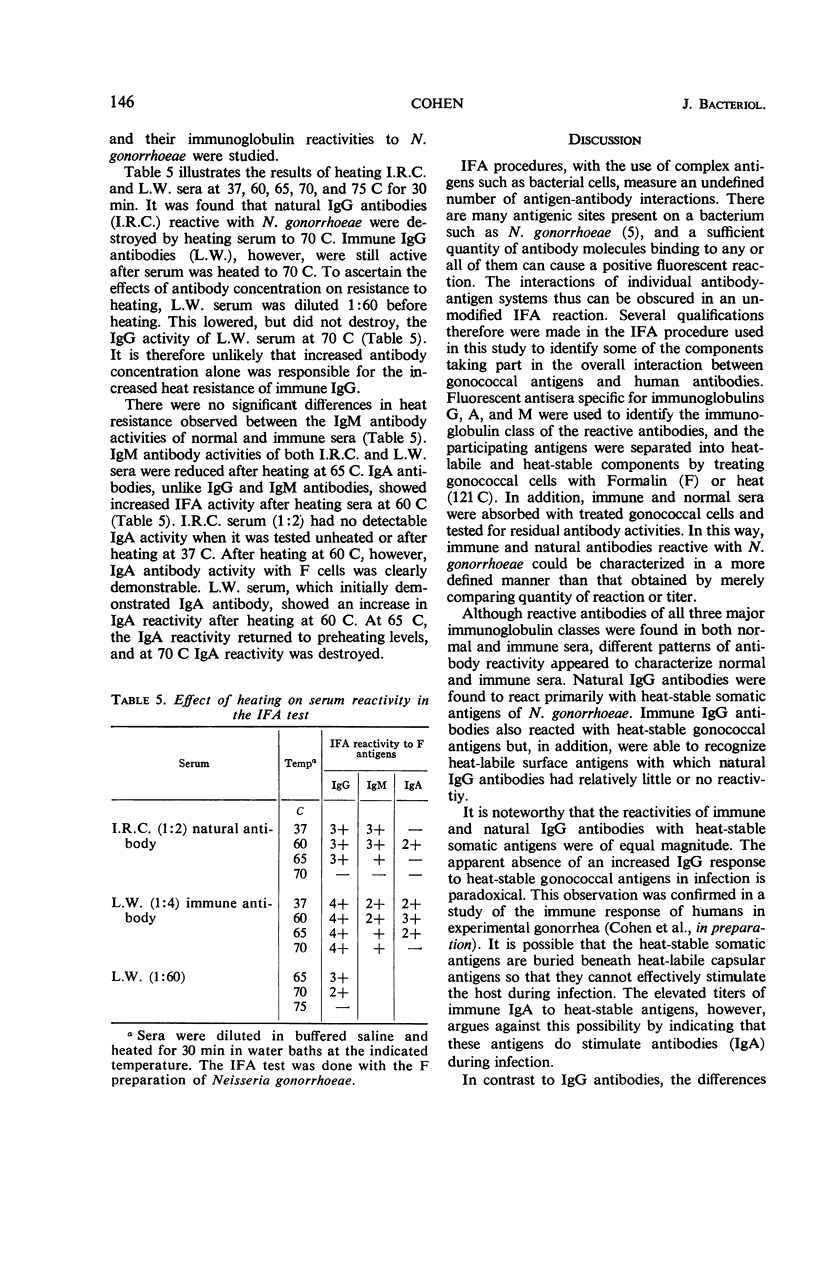
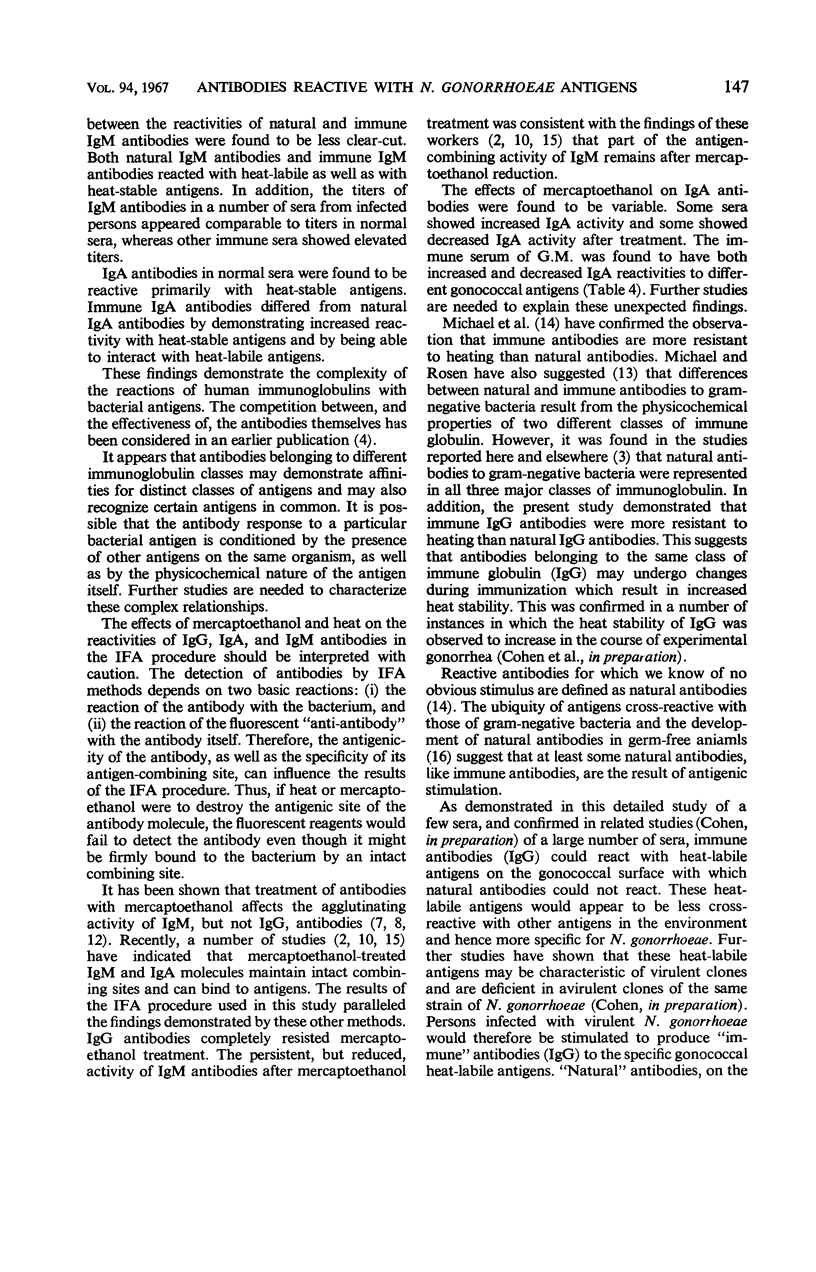
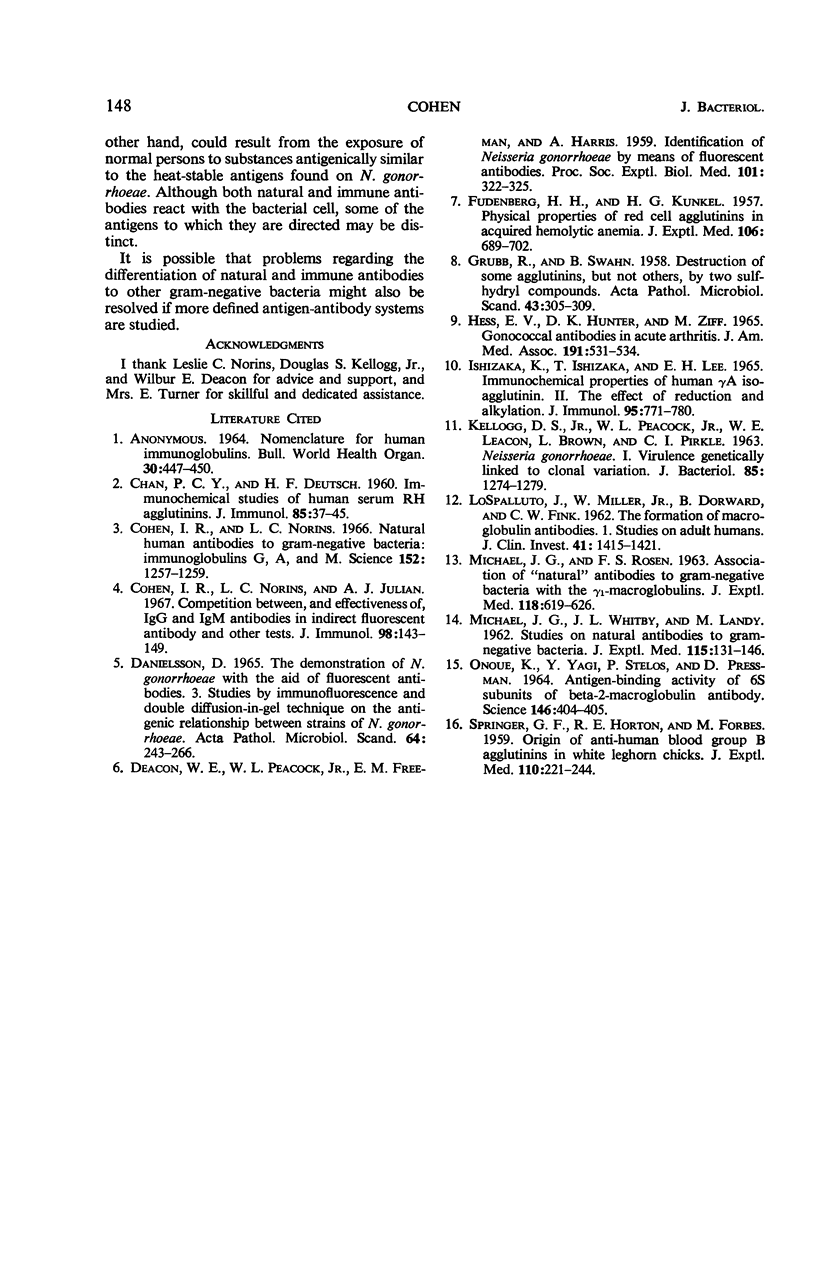
Images in this article
Selected References
These references are in PubMed. This may not be the complete list of references from this article.
- CHAN P. C., DEUTSCH H. F. Immunochemical studies of human serum Rh agglutinins. J Immunol. 1960 Jul;85:37–45. [PubMed] [Google Scholar]
- Cohen I. R., Norins L. C., Julian A. J. Competition between, and effectiveness of, IgG and IgM antibodies in indirect fluorescent antibody and other tests. J Immunol. 1967 Jan;98(1):143–149. [PubMed] [Google Scholar]
- Cohen I. R., Norins L. C. Natural human antibodies to gram-negative bacteria: immunoglobulins G, A, and M. Science. 1966 May 27;152(3726):1257–1259. doi: 10.1126/science.152.3726.1257. [DOI] [PubMed] [Google Scholar]
- DANIELSSON D. THE DEMONSTRATION OF N. GONORRHOEAE WITH THE AID OF FLUORESCENT ANTIBODIES. 3. STUDIES BY IMMUNOFLUORESCENCE AND DOUBLE DIFFUSION-IN-GEL TECHNIQUE ON THE ANTIGENIC RELATIONSHIP BETWEEN STRAINS OF N. GONORRHOEAE. Acta Pathol Microbiol Scand. 1965;64:243–266. doi: 10.1111/apm.1965.64.2.243. [DOI] [PubMed] [Google Scholar]
- DEACON W. E., PEACOCK W. L., Jr, FREEMAN E. M., HARRIS A. Identification of Neisseria gonorrhoeae by means of fluorescent antibodies. Proc Soc Exp Biol Med. 1959 Jun;101(2):322–325. doi: 10.3181/00379727-101-24925. [DOI] [PubMed] [Google Scholar]
- FUDENBERG H. H., KUNKEL H. G. Physical properties of the red cell agglutinins in acquired hemolytic anemia. J Exp Med. 1957 Nov 1;106(5):689–702. doi: 10.1084/jem.106.5.689. [DOI] [PMC free article] [PubMed] [Google Scholar]
- GRUBB R., SWAHN B. Destruction of some agglutinins but not of others by two sulfhydryl compounds. Acta Pathol Microbiol Scand. 1958;43(3):305–309. doi: 10.1111/j.1699-0463.1958.tb04899.x. [DOI] [PubMed] [Google Scholar]
- HESS E. V., HUNTER D. K., ZIFF M. GONOCOCCAL ANTIBODIES IN ACUTE ARTHRITIS. JAMA. 1965 Feb 15;191:531–534. doi: 10.1001/jama.1965.03080070015004. [DOI] [PubMed] [Google Scholar]
- Ishizaka K., Ishizaka T., Lee E. H. Immunochemical properties of human gamma A isoagglutinin. II. The effect of reduction and alkylation. J Immunol. 1965 Nov;95(5):771–780. [PubMed] [Google Scholar]
- KELLOGG D. S., Jr, PEACOCK W. L., Jr, DEACON W. E., BROWN L., PIRKLE D. I. NEISSERIA GONORRHOEAE. I. VIRULENCE GENETICALLY LINKED TO CLONAL VARIATION. J Bacteriol. 1963 Jun;85:1274–1279. doi: 10.1128/jb.85.6.1274-1279.1963. [DOI] [PMC free article] [PubMed] [Google Scholar]
- LOSPALLUTO J., MILLER W., Jr, DORWARD B., FINK C. W. The formation of macroglobulin antibodies. I. Studies on adult humans. J Clin Invest. 1962 Jul;41:1415–1421. doi: 10.1172/JCI104596. [DOI] [PMC free article] [PubMed] [Google Scholar]
- MICHAEL J. G., ROSEN F. S. ASSOCIATION OF "NATURAL" ANTIBODIES TO GRAM-NEGATIVE BACTERIA WITH THE GAMMA-1-MACROGLOBULINS. J Exp Med. 1963 Oct 1;118:619–626. doi: 10.1084/jem.118.4.619. [DOI] [PMC free article] [PubMed] [Google Scholar]
- MICHAEL J. G., WHITBY J. L., LANDY M. Studies on natural antibodies to gram-negative bacteria. J Exp Med. 1962 Jan 1;115:131–146. doi: 10.1084/jem.115.1.131. [DOI] [PMC free article] [PubMed] [Google Scholar]
- ONOUE K., YAGI Y., STELOS P., PRESSMAN D. ANTIGEN-BINDING ACTIVITY OF 6S SUBUNITS OF BETA-2-MACROGLOBULIN ANTIBODY. Science. 1964 Oct 16;146(3642):404–405. doi: 10.1126/science.146.3642.404. [DOI] [PubMed] [Google Scholar]
- SPRINGER G. F., HORTON R. E., FORBES M. [Origin of anti-human blood group B agglutinins in white Leghorn chicks]. J Exp Med. 1959 Aug 1;110(2):221–244. doi: 10.1084/jem.110.2.221. [DOI] [PMC free article] [PubMed] [Google Scholar]



